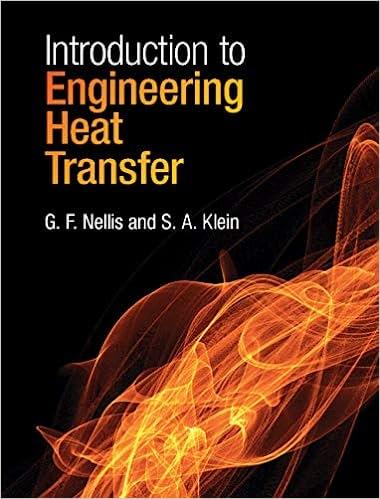Answered step by step
Verified Expert Solution
Question
1 Approved Answer
!!!! 1. A double pipe heat exchanger is constructed from a steel with an inner tube having inner diameter of 26.44mm and outer diameter of
!!!! 
1. A double pipe heat exchanger is constructed from a steel with an inner tube having inner diameter of 26.44mm and outer diameter of 33.40mm. The length of pipe is 10 m. It is desired to use this heat exchanger in the heating of 1500kg/h milk from 20C to 85C (density: 1030kg/m3,Cp=4kj/kg.C.) In the given temperature range, average viscosity of milk is 1.4103Pa.s and the thermal conductivity is 0.56W/m. K. The heating medium is 2200kg hot water per hour which has a temperature of 95 C. Milk will be passed from the inner pipe. The fouling coefficient for milk is 4.76 104(m2.K/W) a) Find the outlet temperature of water for this process ( 10 point) b) Is the double pipe heat exchanger is satisfactory for your requirement? Your reply should be based on calculations. (30 point) c) What type of heat transfer mechanism occurs in that system, give your reasings by explaing the mechanism briefly and drawing the thermal resistance diagram. (10 point) 1. A double pipe heat exchanger is constructed from a steel with an inner tube having inner diameter of 26.44mm and outer diameter of 33.40mm. The length of pipe is 10 m. It is desired to use this heat exchanger in the heating of 1500kg/h milk from 20C to 85C (density: 1030kg/m3,Cp=4kj/kg.C.) In the given temperature range, average viscosity of milk is 1.4103Pa.s and the thermal conductivity is 0.56W/m. K. The heating medium is 2200kg hot water per hour which has a temperature of 95 C. Milk will be passed from the inner pipe. The fouling coefficient for milk is 4.76 104(m2.K/W) a) Find the outlet temperature of water for this process ( 10 point) b) Is the double pipe heat exchanger is satisfactory for your requirement? Your reply should be based on calculations. (30 point) c) What type of heat transfer mechanism occurs in that system, give your reasings by explaing the mechanism briefly and drawing the thermal resistance diagram. (10 point) 
Step by Step Solution
There are 3 Steps involved in it
Step: 1

Get Instant Access to Expert-Tailored Solutions
See step-by-step solutions with expert insights and AI powered tools for academic success
Step: 2

Step: 3

Ace Your Homework with AI
Get the answers you need in no time with our AI-driven, step-by-step assistance
Get Started


